Click below to watch the video
Archeology and Islam #1 The Petra Mosques. Mosques from the first century of Islam pointed to Petra
Transcript
Video #1 This is a general transcript of a Dan Gibson video in the series: Archeology and Islam.
Hello, and welcome to the video series Archeology and Islam. My name is Dan Gibson. Now, over the years, I have visited many mosques in the Middle East; and early on in visiting different sites that I examined throughout the Middle East, I discovered that some of these mosques claimed that they pointed to the city of Jerusalem rather than to Mecca in Saudi Arabia.
So I decided I would make a study of these mosques, and list them in a database to see exactly how many mosques there were that pointed to Jerusalem rather than to Mecca.
And I would use a GPS unit and I would get some accurate data that I could work with to make this list up. I thought that it would make a very interesting small study.
Little did I know that it would become a very large study as I would have to examine very mosque built in the first 200 years of Islam in order to understand what was happening with their Qibla direction.
The Qibla is the direction that the mosque points. In Islam there is a holy direction, known as the Qibla. That is the direction that prayer is to be made, that is the direction that the pilgrimage is to be made, that is the direction that Halal food is to be made when the kill the animal and so forth.
So I began my study and it wasn’t long before I asked a question. There are many mosques that do not face to Mecca in Saudi Arabia. How could they all be built during the first 16 or 17 months that Islam was in existence? Because we know that the Qibla direction changed about 16 or 17 months after the founding of Islam.
But then I discovered it was all very confusing it meant I had to make a database, and then I made charts and mapped it out so I could understand what I was looking at.
And I discovered that there were FOUR different Qibla directions used during the first 200 years of Islam. Now the film, The Sacred City investigates these different Qibla directions and you can watch that film and learn about it.

undefined
But I was amazed that there were these four, and I kept finding them even after making the film. We continued to find more, and people would write and say “have you considered this mosque, or that mosque?” And … “Oh my goodness, I didn’t realize…”
Still, even after all these new discoveries, every mosque faces one of these four different directions. Now in this program, we will look at the first 100 years of Islam and all of the mosques that face towards the city of Petra in southern Jordan.
Every mosque faced Petra, or we can’t measure the mosque. This is the problem when looking at some modern mosques that have been built on top of the old mosques. Did they follow the old foundation or did they tear it all down and re-set the Qibla and now we have a new mosque even though, originally an old mosque stood on the spot.
And sometimes we can’t use the new mosque, because we have no way of being able to understand what was the original mosque’s Qibla and how did it point, because those ruins and the foundations have been lost over time. An example of this is the mosque called the Qiblatain mosque which means two Qiblas. That is found in Medina in Saudi Arabia. It is a very old mosque and it has been there for centuries, and it has been rebuilt several times but in 1987 was the last major large renovation. And they went and tore down the mosque. And as they tore it down they revealed the earlier foundation underneath the mosque.
And so the architect, a famous architect ’Abd el Wahīd el Wakīl, he went down and he measured the foundations and he did drawing of them and he got the data of what that early foundation looked at. Then they dug it all up, and they built the new building.
And from that, he discovered that that Qibla pointed generally towards Jerusalem. But it also points generally towards Petra. And this is a problem with this mosque, which way did the early mosque point, because they are so close to each other in direction.
So perhaps this is where Bukhārī (Abū ‘Abd Allāh Muḥammad ibn Ismā‘īl ibn Ibrāhīm ibn al-Mughīrah ibn Bardizbah al-Ju‘fī al-Bukhārī (أبو عبد الله محمد بن إسماعيل بن إبراهيم بن المغيرة بن بردزبه الجعفي البخاري; 810-870 CE) got the idea that some mosques pointed toward Jerusalem. Bukhārī also mentions that some mosques pointed towards Damascus or Sham. Bukhārī was aware of this when he wrote his writings about 350 years after the time of Muhammad.
The next mosque we want to look at is in Hama in Syria. It is a Umayyad Mosque and it points almost exactly towards Petra in Jordan. This mosque has been damaged rebuilt several times but they have always rebuilt it on the foundations of the earlier mosque.
Next we go to the ancient city of Hawara, known as Humeima in southern Jordan. And this is the house, the large house or castle; some people use the word castle, or manor house built by the Abbas family. They are famous later on, because the Abbasids come from the Abbas family. And their house has a Qibla direction. People would line up in the open courtyard and they would pray towards the city of Petra which was to the north.
Next we go to Khirbat al Minya. This is in the north-eastern corner of the Sea of Galilee. It is an Umayyad palace. There is an inscription in a gateway that says it was built by Al Walīd. So we can date the building of this whole complex and the mosque, and it points within one degree towards Petra.
Next we move on to the oldest remaining mosque in the Iran city of Damghan. It’s a long ways from Petra, so they had to figure out how to do it from a long distance, but they got their Qibla within 5 and a half degrees accuracy, and it pointed to Petra.
The next mosque we go to is Al Aqsa Mosque in Jerusalem. Now there is some misunderstanding about this mosque. That is because there are two Al-Aqsa mosques and today there are even some other Al-Aqsa mosques that are using the same name.
And so the Al-Aqsa Mosque that is mention in the Qur’an in the 17th Sura. It talks about the city of Jiranah which is a few miles outside Masjid al Haram. That is the only description we are given. Al-Wāqidī tell us (al-Wāqidī al-Tārīkh wa al-Maghazi, 69 The Islamic Conquest of Syria) that this mosque is located on a bank of a wadi - so it is on the side of a wadi, it is not on top of a mountain as you would find in Jerusalem. This is a particular mosque that is found near a wadi, a few miles away from Masjid al Haaam.
Now that fits a place, a description of a place near the city of Petra.
If you watch the film, The Sacred City you will see that I am claiming that the original Masjid al Haraam was in the city of Petra and that all of the mosques from the first part of Islam pointed to the city of Petra. And if we go to Petra today, we can locate the place where this mosque was. At the side of the wadi there is a spring of water that is there, and it fits the description where people would come to the spring of water, and Al Aqsa, and they would wash themselves. It is called the farthest mosque because it was the farthest mosque just outside of the city where the pilgrims would wash before they made their way on pilgrimage into the city.
Now, the mosque in Jerusalem is different. That mosque was built about 90 years after the Hijra. So it didn’t exist while the Qur’an was being written. 90 years after the Hijra, it was started by the caliph ‘Umar, he was there he started the construction, and his son, Al Walīd finished the construction of the mosque. Interestingly enough, that mosque point about 3.4 degrees off of Petra. It is very close to Petra, within 3 1⁄2 degrees of pointing at Petra. It does not point to Mecca, and it does not point to one of the other Qiblas, very clearly it points to the city of Petra. So that is Al Aqsa in Jerusalem pointing to Petra.
Khirbat al-Mafjar is the next mosque and it is found in Jericho, in Israel today. It is um, an Umayyad Palace and it points within one degree of accuracy to Petra in Jordan.
Now next, we come to ‘Anjar and the entire Umayyad complex with the mosque inside is all aligned very carefully to point to Petra. It is off by 3.6˚ using modern equipment to measure today but it is very close to the city of Petra. Next we move on to Jordan to the Umayyad palace, called the Mushatta Palace. It contains a mosque as well and it points about 4 degrees off of Petra but very accurate towards Petra.
If we go a little farther, looking other places we’ll find in Oman, the old mosque in Bowshar and this mosque points within one degree of Petra.
And same is true of the other old mosque in Oman, the Suma’il mosque in Oman it points within 2 degrees of Petra. Even if you go way out to Uzbekistan where the Muslim armies were fighting, and when they arrived there they built a mosque called Bibi Samarkand and that mosque is within 2 degrees of Petra.
Another mosque that was pointed out to me recently is in the ancient city of Jerash. That is in Jordan. And Jerash was a Roman city and a mosque was built, and it wasn’t built… I mean the Roman roads were very direct and the mosque is purposely tilted a little bit. And it points to the city of Petra. It is off by a couple of degrees, but it points to the city of Petra.
Also in Jordan there are other places, like the Umayyad Qaṣr Mushash, four degrees off of Petra, Umayyad building at Um Walīd 1.2 degrees off of Petra, the Umayyad mosque in Udruh it is 1.7˚ off of Petra, Just under, less than 2 degrees.
So as we go through this, you realize that all of the mosques point with extreme accuracy to Petra. The farthest off any mosque is, is about 5 degrees.
Most of them are around 1 or 2 degrees and some of them are almost exactly pointing to the city of Petra in southern Jordan.
You can check the measurements; you can check the techniques I used for doing the measurements in the book Early Islamic Qiblas and also in a paper called Jordanian Umayyad Qiblas. Also check the Qibla Tool on this website.
So, eighteen mosques - very close to Petra. From north, south, east and west, with an average of less than 2 degrees of error.
There are not all the mosques, there are a few others that point to Petra as well, I am just listing for time sake, here on this video. You can go to the books and read about some of the others as well.
Now, there are surprising things about this whole discovery of the Qibla. One is that there are four Qiblas. That’s surprising and we will try and look at some of the other Qiblas in other videos.
Again, watch the film. The film has a lot of information in it, or read the books.
One of the things that, scholars have expressed themselves in amazement is the accuracy of their calculations. I mean Iran, India, Uzbekistan, even China. Scholars have assumed that the early Arabs didn’t have the knowledge to make such accurate calculations. Yet these 18 mosques demonstrate they did have the ability to make such accurate calculations and point their Qiblas in an accurate direction. So the accuracy is a surprise.
Second people ask: Well how did they do it? And we don’t know for sure. There are lots of guesses and theories, and I will make a future video and suggest a theory that I have, but we really don’t know how they did it, but we know that they did it. It is kind of like the old pyramids. We know that Egyptians made the pyramids, we don’t know exactly how they made it, but that doesn’t bring into doubt that they built the pyramids. The pyramids are there.
And these 18 Qiblas point with extreme accuracy to the city of Petra. We know for certain that the early Muslim leaders all prayed their prayers towards Masjid al Haram in the city of Petra. That is clearly demonstrated by the archeological evidence.
Now, why Petra? What we can discover is that Petra was the location of Masjid al Haram. The prophet Muhammad, Abu Bakr, Uthmān and ‘Umar, they all prayed towards the city of Petra. And that demonstrates that Petra was the focus of their prayers and it is the ancient city where Islam began. Muhammad was born there, Muhammad was raised there, that’s the place where the Black Rock was, that’s the place where the Ka’ba was. That’s the place where Masjid al Haram is. And if you watch the film, The Sacred City, they go through a whole bunch of different explanations of how that works, and proves that it was Petra. If you want even more proofs, you can go to the book Early Islamic Qiblas, and there are 50 other evidences, other than the Qiblas, that point to the city of Petra as being the location of the first Masjid al Haram.
So Petra fits all the descriptions; Masjid al Haram was there. And that was the direction of prayer that all of the true people, following Islam, that’s how they prayed during those first years of the Islamic religion. Something happened later that it changed but that is the true direction of prayer… the true Qibla.
Now, what is the significance about this? People ask me: So what? Why does it matter? Well, I can only imagine some of the important things, so I will explain what seems important to me, and you can think through what might be important to you.
First of all, the Qur’an clearly commands the followers of Islam to pray towards Masjid al Haram. This is in the 2nd Sura of the Quran. (Sura 2:144) It is very clearly commanded Turn now your face towards a Qibla that I will give to you, a Qibla that will please you, turn your face now to Masjid al Haram. It is very clear, there are no other options. That is the place that you are to direct your prayers.
Also the pilgrimage. The pilgrimage is made to where? To Masjid al Haram. Not necessarily to the Black Rock. The Black Rock was located there originally before it was moved. But the pilgrimage is not to the rock. The pilgrimage is to Masjid al Haram, and to all of the places that were there, Mina, and all the different places that you go, Arafat where you go and stand on the mountain and so forth.
And those places were all located in Petra. And you will discover that in the book Early Islamic Qiblas.
Pilgrimage was to be made towards the Qibla direction and when you kill and animal to make it Halal, you needed to face Majid al Haram. The Qur’an says nothing about the Black Rock being the direction of prayer. That you might find later, by the people when they moved the Black Rock, then they made the Black Rock important. You do not find it in the earliest accounts of, of Islam because it wasn’t the highly important thing. The highest important thing was to face Masjid al Haram.
And so an animal to be Halal needed to face Masjid al Haram, the Qibla direction.
If that direction has been changed, my question is: Does that nullify Halal food? Does that nullify all of the pilgrimages ever made? Does that nullify all of the prayers ever made? Because they are in disobedience to the direction that is clearly given in the Qur’an, and that is clearly spoken of by the prophet Muhammad.
It is a difficult thing. I don’t have the answers. Islam is going to have to work out these answers.
Now those are four basic foundations of Islam and all around the world, Muslims want to obey the prophet. This is what the prophet told them. You need obey. You need to do what Allah commands you to do. And so this is the message that Muhammad brought. And he asked people do to it. And all down through history since the 2nd civil war, that’s when I worked out the dates, trying to figure out when did the Qibla direction change. It was during the 2nd civil war when Ibn Zubayr rebelled and he took the Black Rock. He’s the guy, I believe who moved it down into Saudi Arabia, there is every indication of that. And everything changed. There were people refusing to go on pilgrimages, there were some years where there were no pilgrimages, sometimes they went to both places. So finally they got it sorted out. But it wasn’t until later on in the war, that things happened. So, the rebel Ibn Zubayr began it, the people of Kufa promoted it, and the Abbasids came along and they enforced it. And it is clear that they are the ones who enforced this thing, and tried to make everyone in Islam change their Qibla towards the city of Mecca in Saudi Arabia.
Now, that’s how I see it. I urge you to check out for yourself, read the books, look at the data, decide for yourself. Don’t just count on… what did this teacher say or what does that teacher say? Go back and check it for yourself. This is important stuff. You need to be 100% sure of what the data says.
I believe the archeological data is very clear, and that the very earliest Qibla was towards Petra and you can find all the other evidences in the books that talk about why Petra fits those descriptions.
Now, I have a question. Friends, if you go back and you read the writings of the earlier prophets, do we discover a Qibla direction before the prophet Muhammad? And the answer is, at least as I have looked, I have not found anything talking about a Qibla direction. The word does not appear anywhere in the writings of the Torah, the writings of Moses, the writings of David, the writings of Solomon, the different things that were written before and the other prophets, there is no mention of the Qibla direction.
If you ask Jews, or if you ask Christians, where is your Qibla, they will look at you funny, because they don’t know anything about a Qibla direction.
Now there is a record that some Jews chose to face towards Jerusalem. The prophet Daniel, when he was praying, he chose to face towards Jerusalem. Other people didn’t pray like that. That was his personal choice. And so there were some Jews who had a personal choice to face to Jerusalem but there are no commands given anywhere that we know of, that command Jews or Christians to face in any particular direction. And Jews and Christians will say: God is everywhere. I can face in any direction. They do not have a sacred direction.
Yet, when Muhammad arrives on the scene, he announces that he is a prophet of God, and he tells them: You have a Qibla direction. God has spoken to me and he says there is this sacred direction and that is toward Masjid al Haram.
And so every mosque during the first 100 years of Islam pointed to Masjid al Haram; in Petra. Now a single mosque pointed to Mecca during the first 100 years of Islam.
And that is why Majid al Harrm is found in Petra, but Petra wasn’t the only Qibla. There was another very popular Qibla known as, what I call, the Between direction, but that we’ll save for a different video.
I am Dan Gibson, and this is the first video in the series: Archeology and Islam.
Bibliography
Bukhārī, al-Tarikh al-Kabīr, al-Tarīkh al-Ṣaghīr, and al-Tarīkh al-Awsaţ
Gibson, Dan, Early Islamic Qiblas, Independent Scholars Press, 2017
Wāqidī al-Tārīkh wa al-Maghazi, 69 The Islamic Conquest of Syria
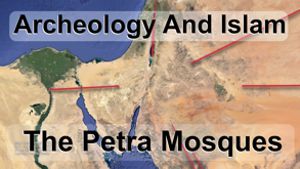
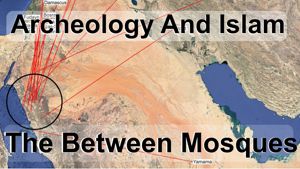
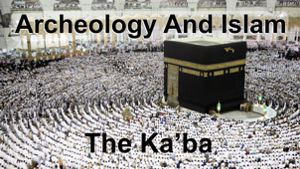
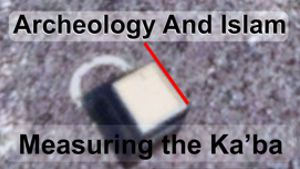

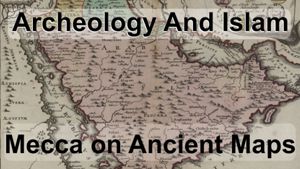
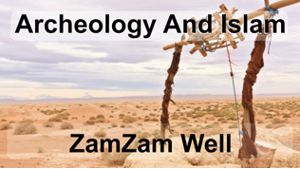

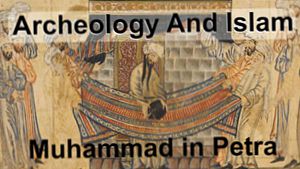
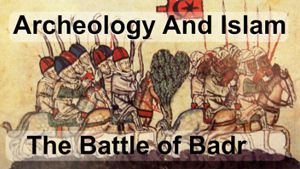
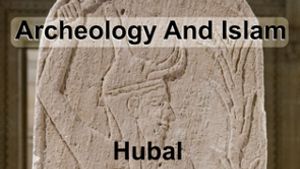
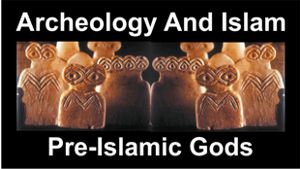
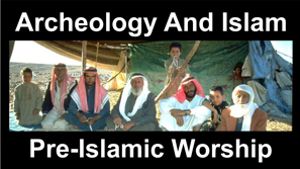



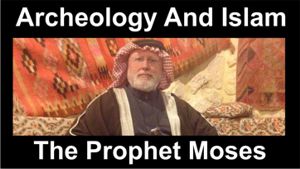


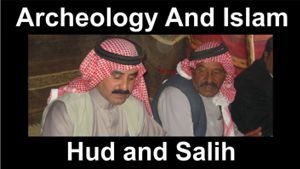
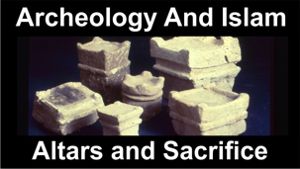

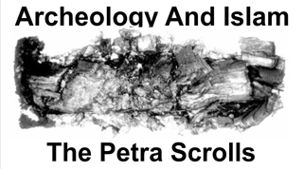
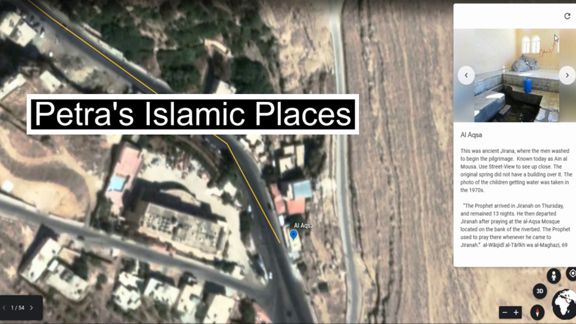

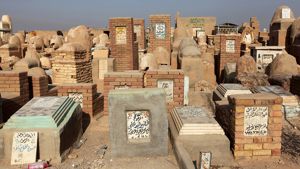
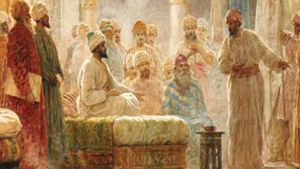
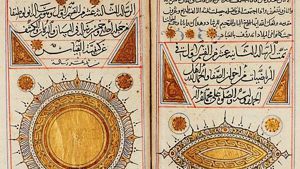
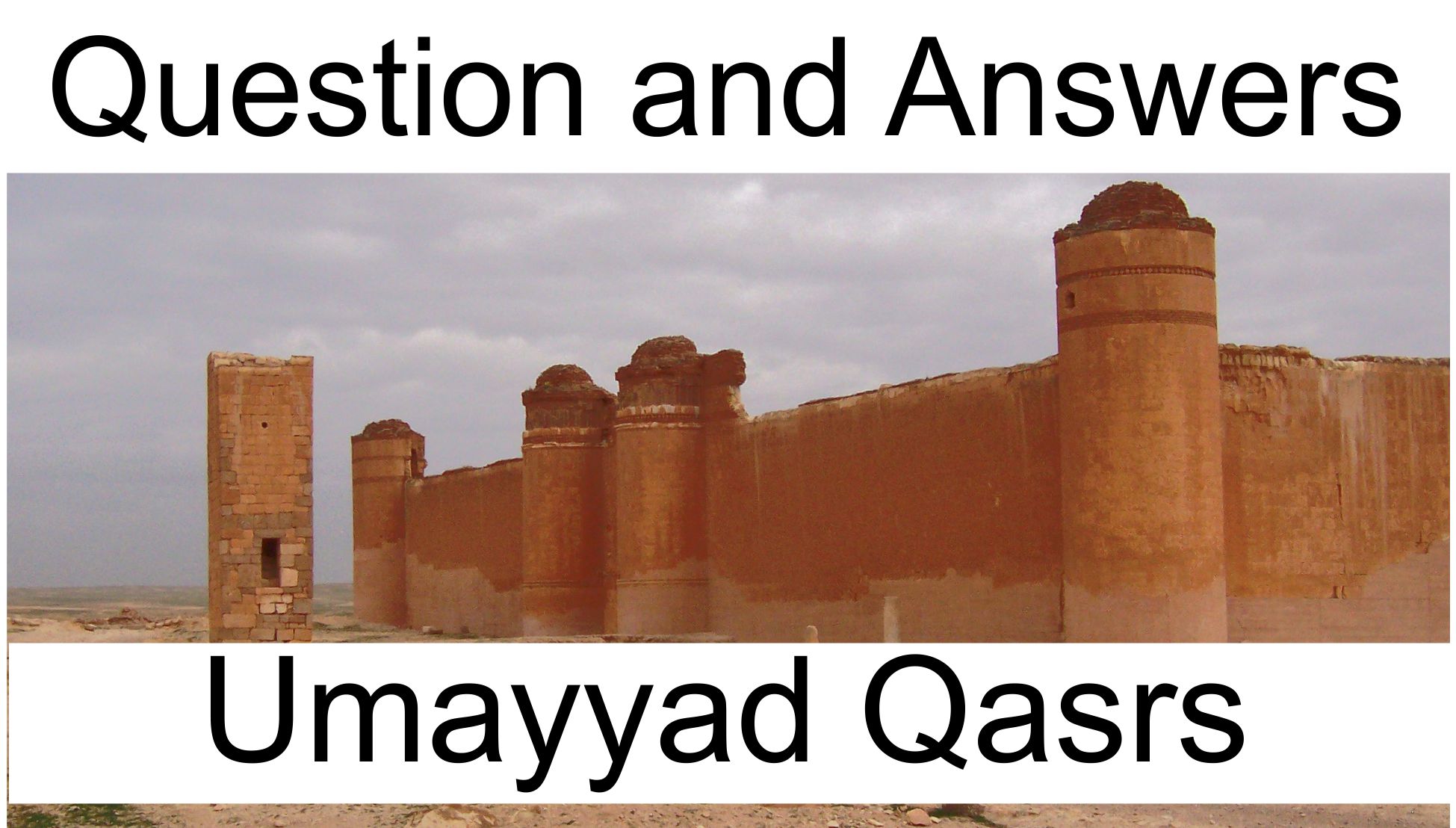
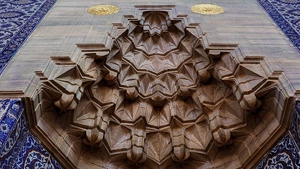
Page Discussion
Membership is required to comment. Membership is free of charge and available to everyone over the age of 16. Just click SignUp, or make a comment below. You will need a user name and a password. The system will automatically send a code to your email address. It should arrive in a few minutes. Enter the code, and you are finished.
Members who post adverts or use inappropriate language or make disrespectful comments will have their membership removed and be barred from the site. By becoming a member you agree to our Terms of Use and our Privacy, Cookies & Ad Policies. Remember that we will never, under any circumstances, sell or give your email address or private information to anyone unless required by law. Please keep your comments on topic. Thanks!